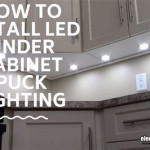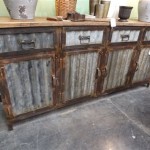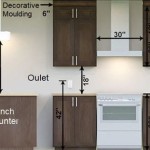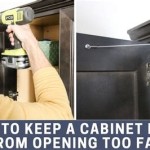How to Resurface Kitchen Benchtops
Kitchen benchtops are a central feature in any kitchen, bearing the brunt of daily use and wear and tear. Over time, they can become scratched, stained, or simply outdated in style. Resurfacing is a cost-effective and efficient solution to revitalize and transform worn-out benchtops, restoring their beauty and functionality. This process involves applying a new layer of material over the existing surface, creating a fresh and updated look without the need for complete replacement.
There are several resurfacing options available, each with its own advantages and disadvantages. Choosing the right method depends on the current state of your benchtops, your desired aesthetic, and your budget. Some common resurfacing techniques include:
1. Refinishing
Refinishing is a cost-effective way to rejuvenate existing benchtops, primarily focusing on restoring the original surface. This process involves removing scratches, stains, and imperfections through sanding and polishing. Refinishing is suitable for minor damage and can be an effective way to refresh the look of natural stone or laminate benchtops. However, it might not be suitable for deep scratches or severe damage.
2. Laminate Resurfacing
Laminate resurfacing is a popular and budget-friendly option that involves covering the existing surface with a new layer of laminate. This process typically involves removing the old laminate, applying a new layer, and sealing it with a protective finish. Laminate is available in a wide array of colors, patterns, and textures, offering ample flexibility for personalizing the kitchen's aesthetic. However, laminate is relatively thin and can be prone to scratches and chips over time.
3. Acrylic Resurfacing
Acrylic resurfacing is a durable and attractive option that involves applying a layer of acrylic over the existing surface. This process typically involves preparing the surface, applying a coat of acrylic, and allowing it to cure. Acrylic resurfacing can transform old benchtops into a sleek and modern finish, offering high resistance to scratches, heat, and stains. It also provides a seamless and monolithic look with a wide range of color options. However, acrylic resurfacing can be more expensive than other options, and professional installation is generally recommended.
4. Epoxy Resurfacing
Epoxy resurfacing is a versatile and durable solution that involves applying a layer of epoxy resin over the existing surface. This process typically involves cleaning and preparing the surface, applying the epoxy resin, and then allowing it to cure. Epoxy offers excellent resistance to stains, scratches, and heat, making it a suitable option for high-traffic areas. It also provides a seamless and hygienic finish, making it ideal for kitchens. However, epoxy can be challenging to apply and requires specialized equipment and expertise for optimal results.
5. Stone Veneer
Stone veneer is a decorative and durable option that involves applying thin slices of natural stone over the existing surface. This process typically involves preparing the surface, applying a layer of adhesive, and then attaching the stone veneer. Stone veneer can provide a sophisticated and luxurious look, with a wide range of natural stone options to choose from. However, it can be a more expensive option, and professional installation is generally recommended.
Preparing for Resurfacing
Before embarking on the resurfacing process, it's crucial to adequately prepare the existing benchtops. This typically involves the following steps:
- Removing existing fixtures and appliances.
- Cleaning the surface thoroughly to remove any dirt, grease, or residue.
- Repairing any cracks or holes in the existing surface.
- Sanding the surface to create a smooth and even base for the new material.
- Applying a primer to ensure proper adhesion of the resurfacing material.
Resurfacing Techniques
The specific resurfacing technique will dictate the specific steps involved. However, the general process usually involves:
- Applying the new material to the prepared surface.
- Smoothing and leveling the new material.
- Allowing the material to cure and harden completely.
- Sealing the new surface with a protective finish.
Considerations for Resurfacing
Several factors should be considered when deciding whether resurfacing is the right option for your kitchen benchtops, including:
- The extent of the damage to the existing surface.
- The desired aesthetic for your kitchen.
- Your budget for the project.
- The level of experience and expertise you have in DIY projects.
Professional resurfacing can provide a more consistent and high-quality result, but it can also be more expensive. If you are considering DIY resurfacing, it's crucial to research the specific technique thoroughly and follow the manufacturer's instructions carefully.
Resurfacing kitchen benchtops is an effective and budget-friendly way to transform the look and functionality of your kitchen. With careful planning and execution, you can create a fresh and updated space that meets your needs and aesthetic preferences.

What Is Benchtop Resurfacing Stone Benchtops

What Is Benchtop Resurfacing Stone Benchtops

How To Resurface A Benchtop

Kitchen Resurfacing For Your Tired Benchtops Cabinets

What Is Benchtop Resurfacing Stone Benchtops

Benchtop Refinishing Adelaide Refresh Kitchen Bathroom Resurfacing

What Is Benchtop Resurfacing Stone Benchtops

3 Ways To Transform Your Benchtop For A Few Hundred Dollars The Interiors Addict

Kitchens Resurfacing

Kitchen Resurfacing For Your Tired Benchtops Cabinets
Related Posts








